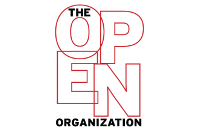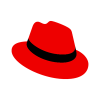Red Hat 블로그
The Friday Five is a weekly Red Hat® blog post with 5 of the week's top news items and ideas from or about Red Hat and the technology industry. Consider it your weekly digest of things that caught our eye.


IN THE NEWS:
The New Stack - For Open Source, Software Foundations are the New Cathedrals
Diane Mueller, director of community development at Red Hat OpenShift, has been working within the open source community for 20 years, having experienced the rise of open source software development first hand. With this extensive experience comes a unique perspective on what can be done to improve the ways in which open source communities collaborate... Initiatives such as the Red Hat OpenShift Commons have also helped to create better work environments for open source developers as their communities and projects continue to evolve. "When trying to build OpenShift Commons, we created a new metaphor for what people think of as open source community models inspired by Eric Raymond's book The Cathedral and the Bazaar. In Raymond's view, the cathedral was the model of how proprietary software is created by a single entity, and the bazaar is how open source collectively gets developed." Mueller explained that foundations are becoming the new cathedrals, a model brought about by the continued commercialization of open source software... Requiring that gatekeepers, and foundation figureheads have the last say when involved in community discussion is something which Mueller began to refine by changing how OpenShift approached its open source community models, while detailing what other open source communities can do to improve their own: "Having everyone start off on a level playing field. That means no foundation fees. Within OpenShift Commons, there's a shared playing field for everybody to join, to be able to reach across and talk to someone from another aspect of the ecosystem without a barrier."


GOOD READ:
Red Hat Blog - The Open Organization: One year later
"When The Open Organization was published a year ago, I wasn't trying to claim that Red Hat had discovered some definitive answers to the questions digital disruption is raising. I recognized that our story–and the way we work every day–contributes something important to the dialog around it. And as I've spoken at conferences and with customers, partners, and associates about the book this past year, I've noticed one question keeps creeping up: "How do I get started?" My answer seems simple but it's worth repeating. The best and easiest place to start is with why your organization exists. Define it and clarify your mission, purpose, and values–beyond money, and establish internal consensus around it... Once people do understand the "why" and are bought in, then it's about "what" to do next, which centers around engagement. Leaders should engage people. Engagement can be as simple as surveying associates about their understanding of your company's strategy, and their role to support it. You can't figure out the "what" if you don't know what your people are thinking or feeling." —Jim Whitehurst, president and CEO, Red Hat


WATCH THE VIDEO:
Why attend the 2016 Red Hat Summit?
Red Hat Summit is the premier open source technology event to showcase the latest and greatest in cloud computing, platform, virtualization, middleware, storage, and systems management technologies. Wondering if you should attend? Hear from our attendees on why they see Summit as a valuable opportunity to learn, network, and experience open source innovation alongside thousands of peers. Then check out the agenda to see hundreds of breakout sessions and find out which topics are right for you.


IN THE NEWS:
GCN - Avoiding common hang-ups in DevOps pipelines
While the goal behind DevOps is to accelerate innovation and processes, not every aspect of a DevOps pipeline should be automated. In fact, there should be clear and defined manual steps in the pipeline, but they should be done with minimal manipulation to keep the process moving. For example, moving artifacts between isolated environments should be a manual process. However, many developers get hung-up on the belief that when artifacts are moved from one environment to the next, no additional testing needs to happen -- just deploy and be done with it. That's the wrong perspective. Drift can happen between environments, and unless each environment is created by code there is no guarantee that the tests run in one environment will generate the same results in another. The infrastructure team should incorporate manual processes into their pipelines and test as necessary. In disconnected environments, it will be necessary to run the same checks in each environment.


GOOD READ:
Linux.com - 5 Cloud, Big Data, and Networking Platforms to Kickstart Your Open Source Career
A decade ago, Red Hat CEO Jim Whitehurst predicted that open source tools and platforms would become pervasive in IT. Fast-forward to today, and that prediction has come true, with profound implications for the employment market. 'Today, it is almost impossible to name a major player in IT that has not embraced open source,' Whitehurst noted in a LinkedIn post. "Open source was initially adopted for low cost and lack of vendor lock-in, but customers have found that it also results in better innovation and more flexibility. Now it is pervasive, and it is challenging proprietary incumbents across technology categories." In particular, open source cloud, Big Data and networking platforms have flourished and the job market now places a premium on workers skilled in these areas. According to The Linux Foundation's 2016 Open Source Jobs Report, 51 percent of surveyed hiring managers say knowledge of OpenStack and CloudStack has a big impact on open source hiring decisions, followed by networking (21 percent), security experience (14 percent), and container skills (8 percent). The good news is that when it comes to five of the most in-demand open source platforms and tools–Hadoop, OpenStack, Apache Spark, OpenDaylight and Docker–there are fast tracks available for becoming skilled with them. In so doing, you can kickstart your open source career.
저자 소개
Red Hat is the world’s leading provider of enterprise open source solutions, using a community-powered approach to deliver high-performing Linux, cloud, container, and Kubernetes technologies.

